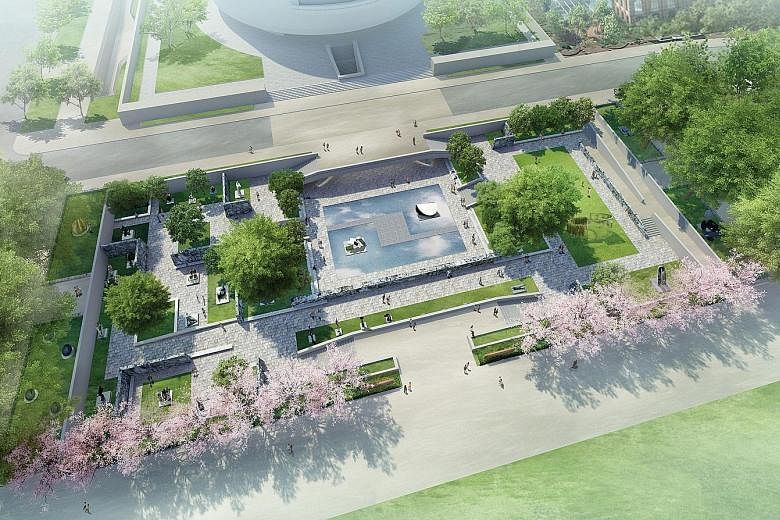WASHINGTON • Seeking to raise its visibility and welcome more visitors, the Hirshhorn Museum in Washington plans to redesign its sunken sculpture garden to create an expanded entrance on the National Mall and directly connect the artsy oasis to the museum's main plaza.
"This is an opportunity to create a new front door for the Hirshhorn on the Mall," said Hirshhorn board chairman Dan Sallick.
"You have 25 million people walking on the Mall every year and, right now, our garden is largely invisible. More of the entry will be at the grade level of the Mall, so when someone walks by, it will feel natural to enter the space."
Artist and architect Hiroshi Sugimoto, who redesigned the Hirshhorn's lobby last year, has created the concept for the 0.6ha garden, part of architect Gordon Bunshaft's celebrated Brutalist design of the Smithsonian's modern and contemporary art museum.
The design plan, released earlier this month, reorganises the garden's many separate spaces into three key areas - one for the modernist works on view, a second for performances and a third for new installations.
The new spaces will allow the museum to programme more events and showcase more art, officials said.
Hirshhorn director Melissa Chiu said: "The plan recognises the shifts in art-making in the 40-odd years since we were founded.
"Many artists create work on a larger scale and we want to create a space for performance and other interactive work."
The Smithsonian Museum and Sculpture Garden opened in 1974 to display the collection of donor Joseph H. Hirshhorn.
The garden was extensively modified in 1981 by landscape architect Lester Collins.
The Hirshhorn's board authorised the museum to move forward with the redesign at a meeting this month. The cost is being determined, but Dr Chiu said it would be funded by a combination of federal dollars and private donations.
In addition to a new entrance, Sugimoto's design provides accessible entries on the north and south sides of the garden and reopens a tunnel under Jefferson Drive to the Hirshhorn's main plaza.
"We wanted to look carefully at the garden and make it just as active as the museum and fully draw visitors," Dr Chiu said.
Creating space for performances and new work is another goal, Mr Sallick said.
"People don't realise that the Hirshhorn's 20th-century sculpture collection is one of the best in the United States," he said.
"We are trying to reframe the collection by showing it alongside new work from 21st-century artists... We're looking at the entire space as a playground for modern and contemporary art."
Sugimoto and his design team at New Material Research Laboratory in Tokyo will work with, among others, landscape architects Rhodeside & Harwell of Alexandria.
"Bunshaft was inspired by Japanese rock gardens and Sugimoto is able to recognise some of that early architectural heritage," Dr Chiu said.
"He is familiar with the building, with the intentions of the architecture. And as an artist who has shown his work around the world, he knows what makes a good exhibition space."
WASHINGTON POST

